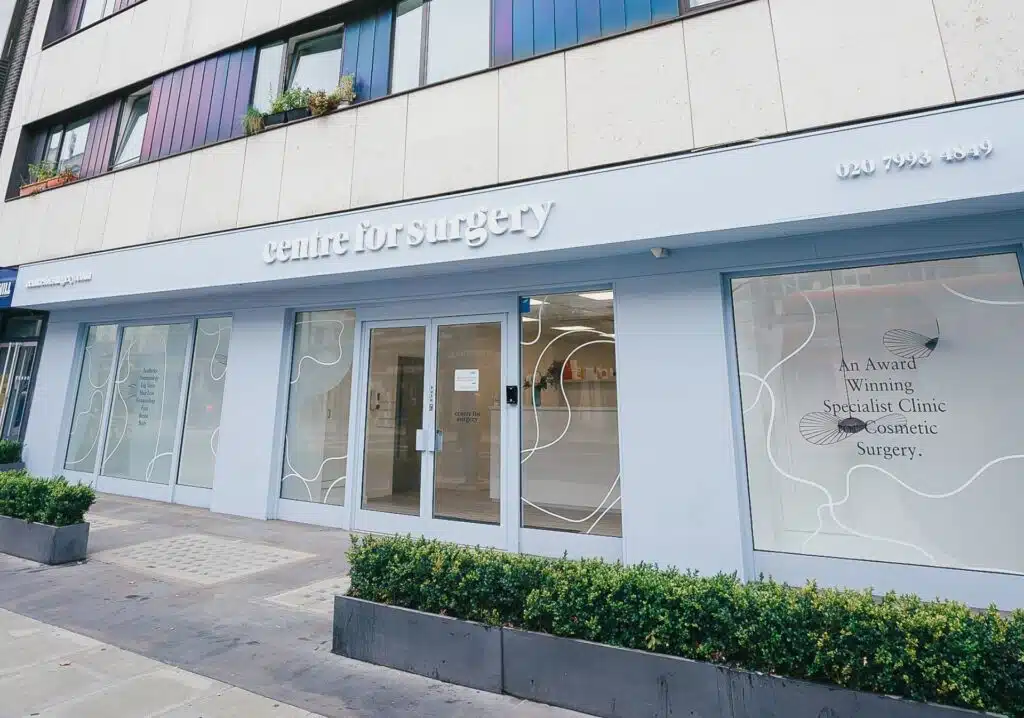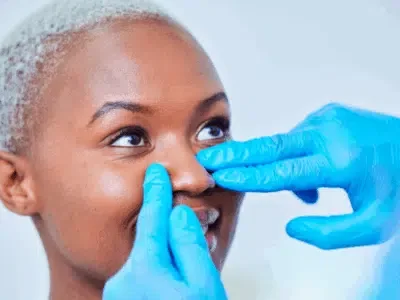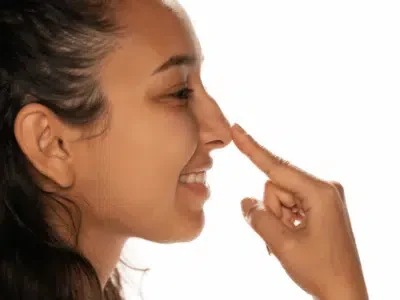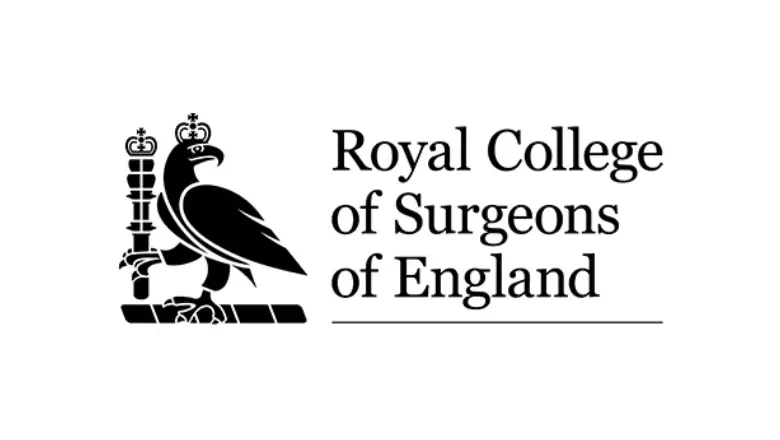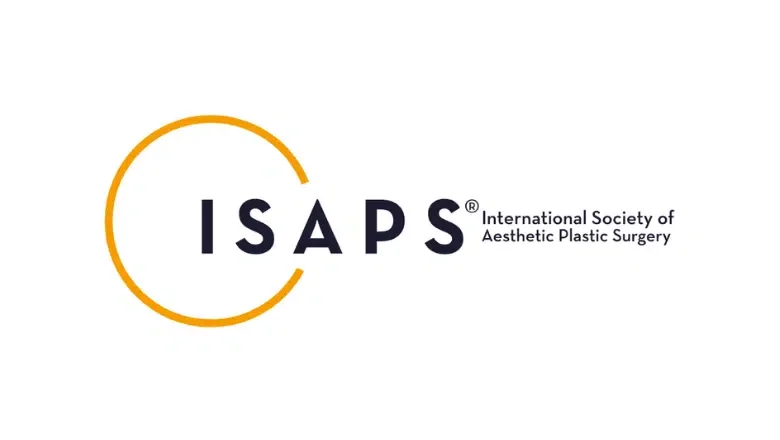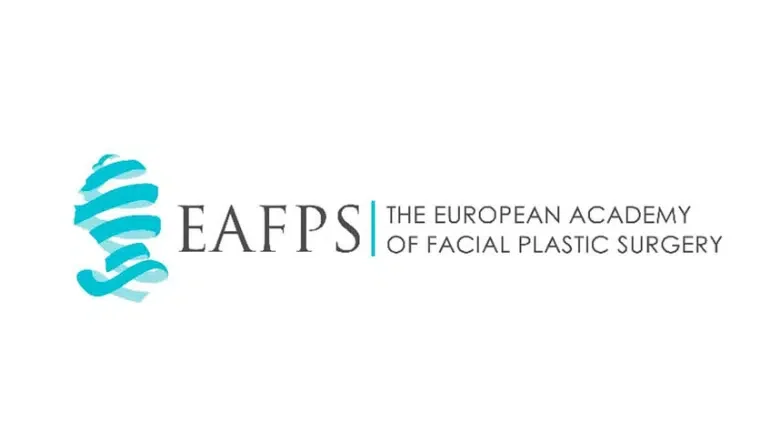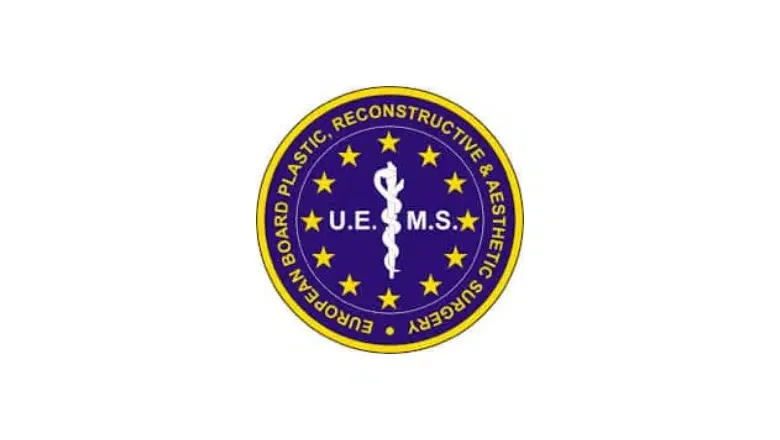Roman Nose Surgery
Every nose is unique. They can be petite, long, broad, or straight; some might be sleek, while others could have little bumps. Across many cultures, people often consider a straight nose to be particularly attractive. A nose that complements the rest of your face can significantly enhance your overall appearance. But let’s be honest, not everyone is fortunate enough to be born with that ‘perfect’ straight nose. Some of us might have noses that are a bit bent or have a hook shape. If you’re one of those people, don’t fret! Modern procedures, like rhinoplasty, offer a solution to help reshape and refine the nose.
If you’re curious about this and want more information, come visit us at Centre for Surgery in London. We’re here to guide you through the journey to your desired nose shape.
RELATED: Nose Surgery FAQs – Q&A about Rhinoplasty
What is a Roman or Aquiline Nose?
An Aquiline Nose, commonly referred to as a Roman nose, has a distinctive curve, especially at the bridge. The term ‘Aquiline’ is derived from the Latin word ‘aquilinus’, which translates to ‘eagle-like’. This is because the curve of the nose is reminiscent of the curved beak of an eagle.
RELATED: Different Types of Nose Shapes – What are the Surgical Options?
How Do I Know If I Have a Roman Shape Nose?
Identifying a Roman nose involves looking for specific traits that define this unique nasal shape. Often referred to as an aquiline nose, this distinctive feature combines elegance and prominence, defining facial aesthetics. If you’re curious about whether your nose fits this category, understanding the key characteristics of a Roman nose is essential.
The hallmark of a Roman nose is its high and prominent bridge, which makes it a standout feature on the face. This type of nose is characterised by a noticeable bridge that extends from the forehead, giving it a distinguished appearance. If your nasal bridge is pronounced and easily seen when viewing your profile, you may have a Roman-shaped nose.
Another subtle yet defining aspect of a Roman nose is its slight curve. Unlike other nose shapes that might be straight or significantly curved, the Roman nose boasts a gentle curve around the bridge. This curve is not overly pronounced but adds to the nose’s character, blending seamlessly with the rest of the facial features.
Furthermore, a Roman nose is often associated with a strong facial profile. This means that the nose itself makes a significant contribution to the overall appearance and character of the face. A Roman nose can impart a sense of strength and definition to the face, making it a desirable trait for many.
Why Might Someone Have a Hooked or Crooked Nose?
There are various reasons why someone might have a nose that’s bent or has a hooked shape. Here are some of the main causes:
Genetics
Sometimes, the shape of our nose is simply down to our genes. If your family members have a hooked or crooked nose, there’s a chance you might inherit that trait too.
Injuries and Trauma
A sudden blow or injury can alter the shape of the nose. Sports injuries, accidents, or even fights can lead to a change in nose shape.
Infections
Certain severe infections can potentially change the structure and appearance of the nose.
Previous Nose Surgeries
Sometimes, a previous surgery intended to correct or enhance the nose might not go as planned, leading to an undesired shape.
Tumours
Though rare, growths or tumours in the nose can alter its appearance and structure.
For those seeking a change, modern surgical methods can help correct the appearance of the nose, ensuring it matches an individual’s desired look and complements their facial features.
RELATED: Male Rhinoplasty (Nose Job for Men)
Is There a Difference Between a Roman Nose and a Greek Nose?
The fascination with facial aesthetics often leads us to compare and contrast different features, including the well-documented Roman and Greek noses. These terms not only describe physical attributes but also carry a rich cultural and historical significance, deeply rooted in the art and history of ancient civilisations.
RELATED: What Nose Shape Concerns Can Rhinoplasty Correct?
A Roman nose, as characterised by its prominent structure, is known for its noticeable bridge that prominently extends down from the forehead. This type of nose typically features a slight curve towards the tip, adding a distinctive contour that is often associated with strength and character. The Roman nose is a symbol of regality and has been celebrated in numerous sculptures and paintings of ancient Roman figures, reflecting the ideals of beauty and nobility in Roman culture.
Conversely, the Greek nose is celebrated for its straightness and well-proportioned form, with a narrow bridge that is often considered the epitome of classical beauty. The Greek nose is straight from the base to the tip, creating a harmonious balance with the other facial features. This nose shape has been immortalised in ancient Greek art, embodying the Greek ideals of symmetry, proportion, and aesthetic harmony.
The differences between these two nose shapes are not only physical but also symbolic, representing the aesthetic values and artistic expressions of their respective cultures. While the Roman nose is viewed as a sign of strength, determination, and nobility, the Greek nose is admired for its symmetry, balance, and classical beauty. Both nose types have been glorified in classical arts, showcasing the enduring legacy of ancient Roman and Greek contributions to our understanding of beauty and aesthetics.
How Can I Fix a Hooked or Crooked Nose?
When considering modifications to the nose, several avenues can be explored, depending on the desired extent of change and the specific issues being addressed. Consultation with a skilled plastic surgeon is essential to evaluate and recommend the most appropriate intervention. Here’s an overview of the potential treatments:
Rhinoplasty
Rhinoplasty, often termed a ‘nose job’, is a surgical procedure that modifies the structure and appearance of the nose. There are two primary categories:
- Cosmetic Rhinoplasty: This type targets enhancing the aesthetic appearance of the nose, without necessarily affecting its function.
- Functional Rhinoplasty: This approach aims to rectify any breathing issues or internal obstructions, which might be causing discomfort or medical problems. Benefits of rhinoplasty can encompass a host of enhancements, such as straightening, reshaping, and adjusting the size of the nostrils.
Septoplasty
A septoplasty is a surgical intervention focused on the septum – the partition separating the two nasal cavities. This procedure is particularly effective for those with a deviated or bent septum, which might give the nose a hooked or crooked appearance. Beyond cosmetic appeal, septoplasty can offer relief from:
- Persistent snoring.
- Recurrent headaches.
- Prolonged facial discomfort.
- Excessive nasal discharge.
Septorhinoplasty
Septorhinoplasty represents a sophisticated surgical approach that unites the aesthetic aspirations of rhinoplasty with the functional corrections of septoplasty. This dual-purpose procedure is meticulously designed to enhance the visual appeal of the nose while simultaneously rectifying structural issues that impair nasal breathing, such as a deviated septum.
The essence of septorhinoplasty lies in its holistic approach to nasal surgery. By addressing both the external appearance and internal structure, it offers a comprehensive solution for individuals seeking not just an improvement in their nasal contours but also a resolution to respiratory difficulties. The procedure involves precise modifications to the nasal framework, which can include reshaping the nasal bridge, refining the nasal tip, and altering the overall size and shape of the nose to achieve a harmonious balance with the rest of the facial features.
Simultaneously, septorhinoplasty tackles the internal deviations of the nasal septum, which is the partition separating the two nasal passages. A deviated septum can significantly obstruct airflow, leading to chronic breathing issues, congestion, and snoring. By straightening this internal structure, the surgery enhances the functional aspect of the nose, facilitating smoother airflow and improving respiratory efficiency.
Non-surgical Nose Correction
For those not keen on undergoing surgery, there’s an alternative: non-surgical nose reshaping. This procedure involves the careful injection of dermal fillers into strategic areas of the nose, subtly altering its shape and contour. While it’s a less invasive approach, it’s particularly suited for individuals needing slight modifications. Some of its advantages include:
- Absence of a need for anaesthesia.
- Rapid recovery period.
- Minimal side effects, like swelling or bruising.
- A cost-effective alternative when compared to full-scale nose surgery.
What is Crooked Nose Surgery, and When is It Necessary?
Crooked nose surgery, commonly referred to as rhinoplasty, is a surgical procedure designed to correct or enhance the appearance of a deviated, curved, or crooked nose. Beyond its aesthetic benefits, this surgery can also address functional issues, making it a versatile solution for individuals facing both physical discomfort and dissatisfaction with their nasal appearance.
The need for rhinoplasty, or crooked nose surgery, arises from various factors. For some, the motivation is purely aesthetic, seeking to straighten a nose that curves or deviates, thus achieving a more symmetrical and harmonious facial profile. For others, the impetus is functional, aiming to alleviate breathing difficulties caused by a misaligned nasal structure. In either scenario, rhinoplasty offers a tailored approach to rectify these concerns.
RELATED: Broken Nose Surgery – Break Your Nose?
Performed under general anaesthesia, the procedure typically spans from 90 minutes to three hours, depending on the complexity and goals of the surgery. Rhinoplasty involves precise adjustments to the nasal structure, employing techniques tailored to the individual’s unique nasal anatomy and desired outcome.
This operation is not gender-specific and caters to both male and female patients, addressing concerns that range from genetic predispositions to injuries, such as a broken nose. Men, in particular, may seek rhinoplasty for functional improvement or to enhance their nasal aesthetics, reflecting the broad appeal of this surgery across demographics.
Postoperatively, patients can expect some degree of rhinoplasty swelling around the nose, cheeks, or upper lips. While discomforting, these symptoms are typically temporary and subside approximately ten days after the procedure. It’s important for patients to follow their surgeon’s aftercare instructions closely to ensure a smooth recovery and optimal results.
In some cases, a second surgery, known as revision rhinoplasty, may be necessary to refine or correct the outcomes of the initial procedure. Given the complexity of revision surgeries, they require a high level of expertise and are approached with caution by many surgeons. Individuals considering this route are encouraged to consult with experienced plastic surgeons to understand the risks and benefits thoroughly.
Getting Ready for Aquiline Nose Surgery
Opting for Aquiline Nose Surgery is a significant decision, and adequately preparing for the procedure is crucial to ensure optimal results and a smooth recovery. If you’ve decided to proceed with this surgery, here’s a step-by-step guide to help you get ready:
Pre-surgical Tests
Before your surgery, your surgeon will likely request various medical tests to ensure you’re a suitable candidate for the procedure. It’s essential to complete these tests in a timely manner.
Kick the Unhealthy Habits
If you’re a smoker, it’s essential to quit or at least significantly reduce your intake several weeks before the surgery. Similarly, it’s advised to cut down or eliminate alcohol consumption. Both smoking and drinking can interfere with the healing process and might lead to complications.
Medication Review
Discuss your current medications with your surgeon. They might advise adjustments to your usual drug regimen, either pausing or switching certain medicines. Always follow their advice meticulously.
Plan Work or School Leave
Depending on the nature of your job or daily activities, you’ll need to take some time off. It’s prudent to arrange this in advance to ensure you have ample recovery time without the pressures of daily commitments.
Steer Clear of Specific Drugs
A few weeks before the surgery, it’s crucial to avoid medicines that can thin your blood or increase bleeding risks. These include aspirin, some anti-inflammatory drugs, and certain herbal supplements.
Transportation Arrangements
Due to the sedative effects of anaesthesia, you won’t be in a condition to drive immediately post-operation. Make arrangements for a friend, family member, or taxi service to take you home.
Limit Caffeine Intake
To reduce potential complications and interactions with anaesthetics or medications given during the surgery, it’s a good idea to decrease or ideally stop caffeine consumption about a week before the procedure.
A Guide to Aquiline Nose Surgery at Centre for Surgery
Undergoing Aquiline nose surgery can be a transformative journey, both aesthetically and emotionally. At the Centre for Surgery, we understand the importance of each step. Below is a comprehensive outline of what you can expect during this transformative process.
Initial Consultation
- Understanding Your Needs: Your journey begins with a detailed consultation. The surgeon will evaluate your nose and understand your aesthetic desires and expectations.
- Detailed Examination: A thorough nose examination ensures that the surgeon identifies any underlying conditions or considerations that might affect the procedure.
- Clarity on Outcomes: Leveraging the state-of-the-art 3D imaging system, the surgeon will offer a virtual glimpse into the post-operative results. This ensures you have a realistic expectation of the surgery’s outcome.
- Informative Discussion: This phase concludes with insights into pre- and post-surgical care, a discussion on potential costs, and answers to any other queries you might have.
The Surgical Procedure
- Detailed Walkthrough: On the appointed day, the surgeon revisits the procedure steps to ensure you’re entirely at ease.
- Anaesthesia Administration: An experienced anaesthetist ensures a smooth and pain-free surgery experience by administering appropriate anaesthesia.
- Surgical Approach: Using precise incisions inside the nose, the surgeon crafts and refines the cartilage and underlying structures. This reshaping focuses on the bridge and the tip to achieve the desired Aquiline nose contour.
- Closure and Dressing: Once the reshaping is achieved, the surgeon meticulously closes the incisions using sutures and applies bandages to safeguard the nose and maintain its new structure.
Recovery Journey – Recovering after a Nose Job
Immediately after Surgery
Typically, a nasal splint will be worn for about a week to support the nose’s new shape and protect it. Initial recovery will involve some bruising and swelling, particularly around the nose and eye areas.
First Week
This period will see significant improvements. If non-absorbable stitches were used, they’d typically be removed around this time.
Third Week
You will notice a substantial reduction in bruising, swelling, and any redness.
One Month and Beyond
From the fourth week onwards, you’ll feel more like yourself. By the sixth week, you’ll be cleared to resume your regular activities, including intensive workouts.
Postoperative Care Guidelines After Aquiline Nose Surgery
Your recovery post-Aquiline nose surgery is pivotal to achieving optimal results. To ensure you heal well and the desired shape is maintained, here are essential care tips to follow:
Sleeping Position
To reduce swelling, make sure to prop up your head slightly. Use a few pillows to keep your head elevated while resting or sleeping.
Dietary Precautions:
Opt for soft foods that require minimal chewing in the initial two weeks post-surgery. Drink plenty of fluids but avoid using straws as the sucking motion can strain your nose.
Breathing & Oral Care:
It’s crucial to avoid nose breathing in the initial weeks post-surgery to protect the internal sutures and newly sculpted structure. Avoid actions that require opening your mouth too wide, such as big yawns, during the initial recovery phase.
Physical Activity:
Heavy lifting and rigorous exercise can increase blood pressure, potentially causing bleeding or additional swelling. It’s best to abstain until your surgeon gives the all-clear. Contact sports pose a direct risk to your recovering nose. Taking at least six weeks off is recommended to ensure the nose is adequately healed.
Water Activities:
Hold off on taking dips in swimming pools or hot tubs for a few weeks. Immersing your recovering nose in water can elevate the risk of infection. Be careful during showers. Ensure the water pressure isn’t too strong, and the water temperature isn’t too hot.
Medications:
Adhering to your prescribed medication schedule is key. This not only manages pain and discomfort but also mitigates the risk of post-operative infections.
Avoiding Pressure:
Refrain from bending over in the first week, as it can increase facial pressure. Any direct or excessive pressure on the nose can disrupt its new structure, so be gentle, especially when washing your face or changing clothes.
FAQs on Hooked or Crooked Noses and Surgical Solutions
Are Aquiline Noses Considered Attractive?
The aquiline nose, often celebrated for its distinctive profile that resembles the curved beak of an eagle, has long been considered a symbol of beauty and dignity. This perception is deeply rooted in history and culture, particularly within the classical artistic styles of ancient Rome. The term “aquiline” itself, derived from the Latin word for eagle, suggests a sense of nobility and strength, qualities that have been admired in various societies throughout the ages.
The aesthetic appreciation for the aquiline nose shape underscores the subjective nature of beauty. What is considered attractive or desirable in one culture may differ significantly in another, highlighting the diverse perspectives on facial aesthetics around the world. In Roman society, for example, the aquiline nose was often associated with leadership, courage, and noble character, traits that were highly valued and sought after. Such noses were prominently featured in sculptures and paintings, immortalizing the aquiline shape as an ideal of classical beauty.
However, it’s important to acknowledge that beauty standards are not only variable across different cultures but also evolve over time within the same society. The classification of nose shapes, including the aquiline nose, as attractive or otherwise is a reflection of these shifting standards and the influence of cultural, historical, and social factors on our perceptions of beauty.
In contemporary discussions on aesthetics, the aquiline nose continues to be regarded by many as a desirable trait, admired for its unique curvature and the distinct profile it gives to the face. Yet, the ultimate measure of beauty remains a personal and subjective experience, influenced by individual preferences, cultural backgrounds, and societal norms.
Which nose shape is often deemed the most aesthetically pleasing?
Beauty perceptions are highly subjective. However, many believe that a straight or ‘Greek’ nose is often considered to be the epitome of attractiveness.
How can I reduce the size of my nose?
A definitive reduction in nose size can be achieved through rhinoplasty.
RELATED: How To Make Your Nose Smaller
What Are the Benefits of Crooked Nose Surgery?
Crooked nose surgery, or rhinoplasty, is a highly sought-after procedure for its ability to significantly enhance both the functional and aesthetic aspects of the nose. This surgery not only rectifies structural irregularities but also brings a multitude of benefits that can improve the overall quality of life for patients. Here, we explore the key advantages of undergoing crooked nose surgery.
Improved Aesthetics: The primary appeal of rhinoplasty lies in its potential to dramatically improve the appearance of the nose. By addressing and correcting deviations, this surgery can enhance the nose’s shape, size, and alignment, resulting in a more aesthetically pleasing facial feature.
Enhanced Facial Harmony: A crooked nose can disrupt the balance and symmetry of the face. Through precise surgical adjustments, crooked nose surgery can realign the nose, ensuring it complements other facial features. This harmony enhances the overall attractiveness and proportionality of the face.
Better Breathing: Functional issues, such as a deviated septum associated with a crooked nose, can impede airflow and lead to breathing difficulties. Rhinoplasty can correct these structural abnormalities, facilitating easier breathing and contributing to a more comfortable and healthy daily life.
Correction of Trauma or Injury: Accidents or injuries can result in a crooked or damaged nose, affecting both its function and form. Crooked nose surgery offers a solution to restore the nose to its pre-injury appearance, or even improve upon it, thereby addressing the physical and emotional impacts of such traumas.
Correction of Congenital Issues: Many individuals are born with congenital nasal deformities that lead to a crooked nose. Through surgical intervention, these innate issues can be corrected, allowing for normal nasal function and improved facial aesthetics from a young age.
Boosted Self-Confidence: The psychological benefits of crooked nose surgery are profound. A more aesthetically pleasing or functionally improved nose can significantly boost self-esteem and confidence, positively affecting social interactions, professional opportunities, and overall mental well-being.
How do certain individuals develop an Aquiline nose?
An Aquiline nose is primarily influenced by genetics and is prevalent among specific ethnic populations including those from Southern Europe, the Balkans, the Caucasus, South Asia, West Asia, North Africa, Central Asia, and the Horn of Africa.
Why isn’t my nose symmetrical on both sides?
Mild asymmetries in our facial features, including the nose, are natural, often resulting from variances in cartilage formation.
Can noses be naturally crooked without any trauma?
Yes, many individuals have naturally asymmetrical or crooked noses without any history of injury.
How can one permanently correct a hooked nose?
To achieve a lasting correction of a hooked nose, one should consider undergoing nose surgery or rhinoplasty.
RELATED: Nose Bridge Rhinoplasty
Can rhinoplasty transform my overall facial appearance?
Undoubtedly. A well-executed rhinoplasty can harmonise facial features, enhancing overall attractiveness. Even slight irregularities in the nose can influence facial symmetry.
RELATED: Is A Nose Job Worth It?
Is there an age recommendation for undergoing nose surgery?
While there isn’t a strict age limit, it’s generally advised to consider rhinoplasty at 18 or beyond, as this is typically when the nose completes its growth. However, personal understanding of the procedure and general health are also crucial factors.
What’s the typical duration for a nose surgery procedure?
On average, rhinoplasty procedures last between 2.5 to 3 hours. However, the duration can fluctuate based on individual needs and the extent of reshaping required.
What does nasal tip plasty entail?
Nasal tip plasty is a specific surgical technique focused on refining the nasal tip without altering the bone structure.
Why might my nose appear more crooked in photographs?
Photographs capture a static, often reversed, representation. They can accentuate certain angles or curves, making features seem more pronounced than they appear in reality.
Is it feasible to modify nose cartilage?
Absolutely. During a rhinoplasty, the surgeon can adjust the cartilage to achieve the desired nose shape.
Is it possible for a non-surgical nose procedure to rectify a crooked nose?
This depends on the individual and the severity of the crookedness. Non-surgical procedures can offer temporary improvements for some. For a lasting solution, surgical rhinoplasty would be the recommended approach.
Will non-surgical rhinoplasty increase the size of my nose?
Technically, introducing fillers will add volume. However, the technique focuses on proportions, often giving the illusion of a refined, smaller nose.
Why Choose Centre for Surgery?
When it comes to your body and health, it’s essential to place your trust in the hands of experts. Centre for Surgery stands as a beacon of excellence in the realm of surgical care, and here’s why:
1. Expertise at Every Corner: Our team comprises seasoned professionals, each with years of specialised training and real-world experience. Their dedication to the craft ensures that you receive the highest level of care, tailored just for you.
2. State-of-the-Art Facilities: Centre for Surgery boasts cutting-edge facilities, equipped with the latest in medical technology. This means more efficient procedures, minimal discomfort, and faster recovery times for our patients.
3. Patient-Centric Approach: Your journey is important to us. From consultation to recovery, our team is with you every step of the way, ensuring your experience is seamless, comfortable, and informed.
4. Stellar Testimonials: But don’t just take our word for it. Hear it from our satisfied patients:
- “From the first consultation to the post-op check-ups, my experience with Centre for Surgery has been nothing short of amazing. Their professionalism and care made all the difference.” – Clara M.
- “I was quite nervous, but the team at Centre for Surgery put me at ease instantly. The results? Better than I could have ever imagined!” – Raj K.
- “The Centre for Surgery is top-notch. Their attention to detail, expertise, and compassionate care set them apart from the rest.” – Sofia P.
5. Transparent Pricing: No hidden costs, no surprises. Our transparent pricing model ensures you know exactly what you’re paying for.
6. Continuous Support: Surgery is not the end of our relationship. Our aftercare programs ensure you’re supported long after your procedure, with regular check-ups and a dedicated team on call.
Ready to embark on your transformative journey with the Centre for Surgery? We invite you for a comprehensive consultation to discuss your needs and desires.
📞 Contact Us: To book your consultation or for any queries, please ring us on 0207 993 4849 or drop us an email at contact@centreforsurgery.com.
Choose the best. Choose Centre for Surgery. Your journey towards a more confident self begins here.


